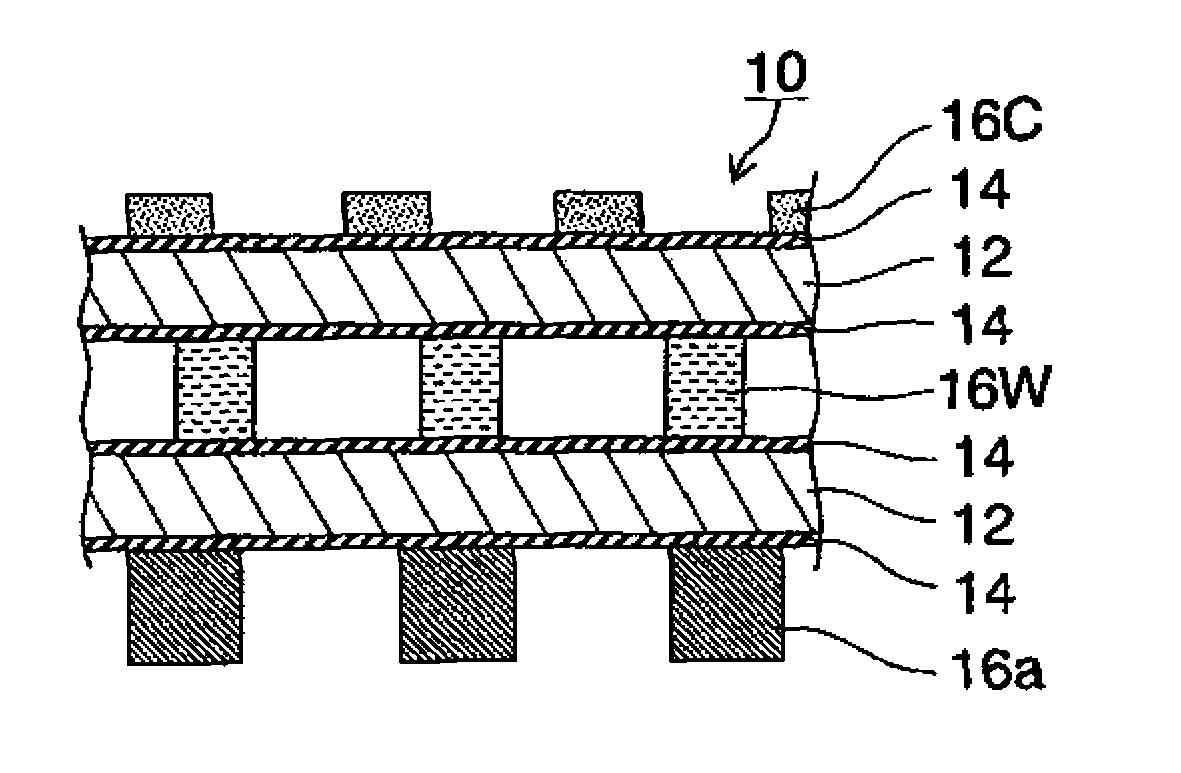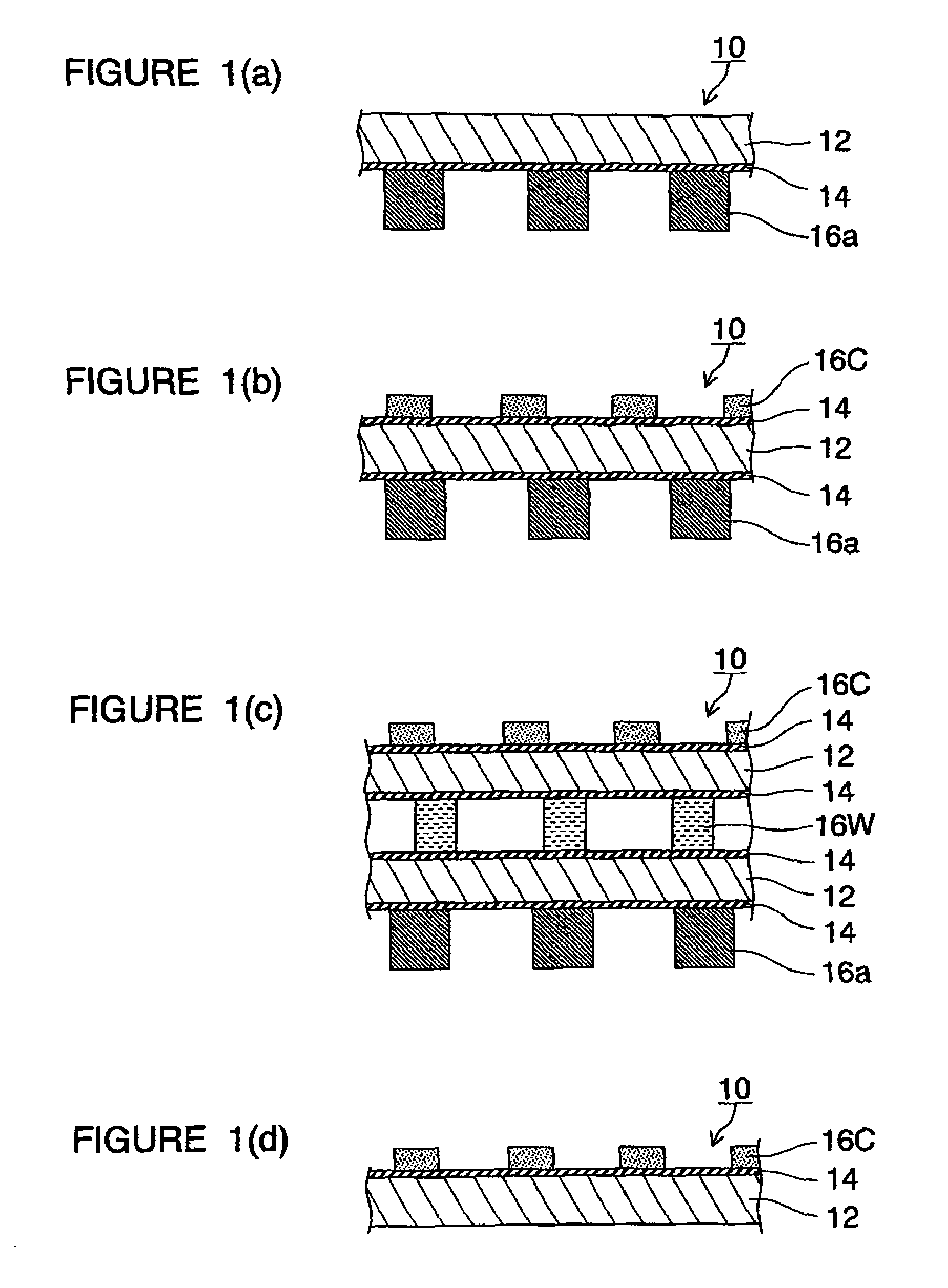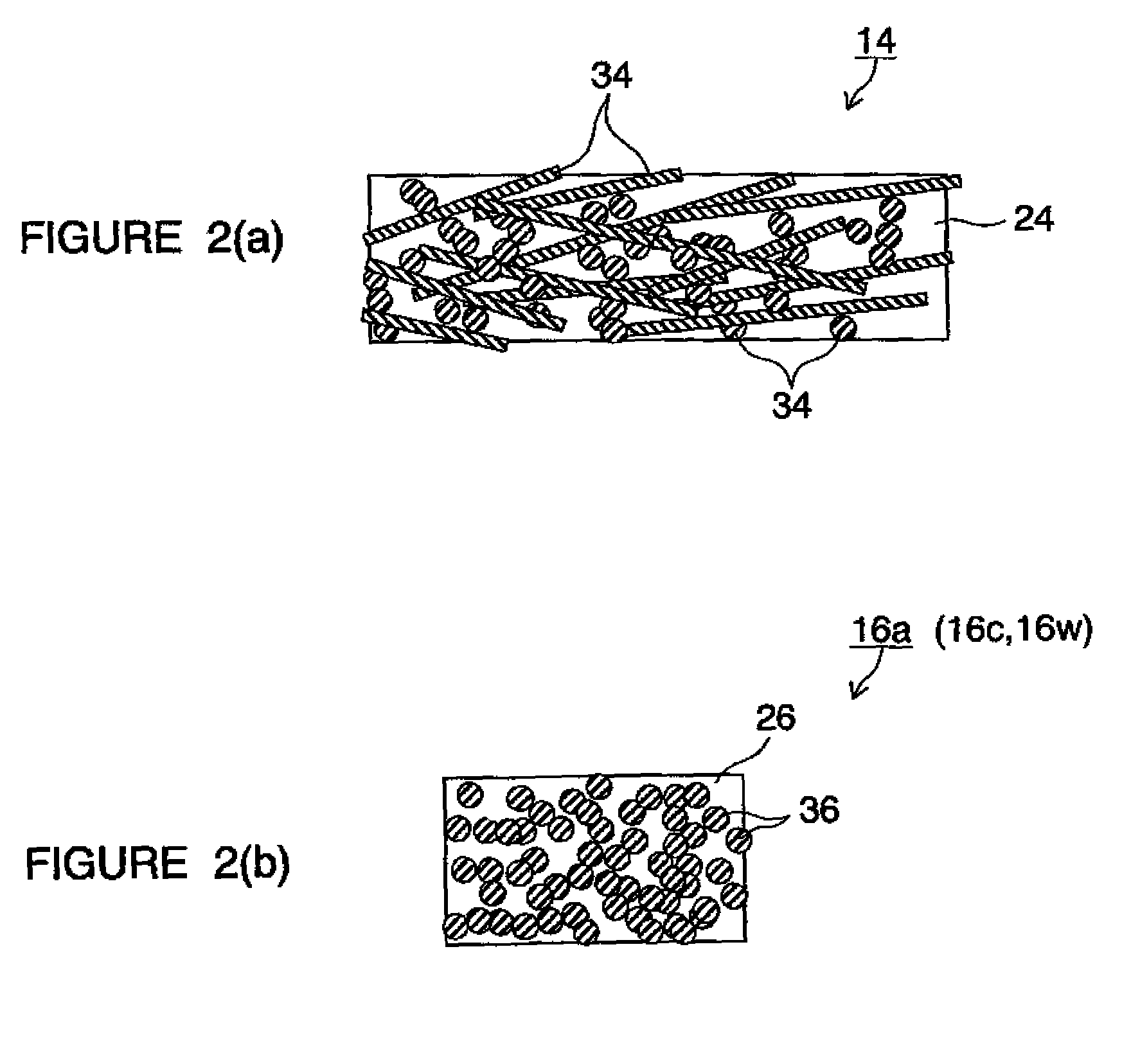Metallic separator for fuel cells and method of manufacturing the metallic separator
a fuel cell and separator technology, applied in the direction of sustainable manufacturing/processing, final product manufacturing, electrochemical generators, etc., can solve the problems of difficult evaluation of local corrosion, difficult maintenance of corrosion resistance metallic separators, and long time-consuming maintenance of corrosion resistance, etc., to reduce the susceptibility to stress-corrosion cracking, improve corrosion resistance, and reduce the effect of stress-corrosion cracking
- Summary
- Abstract
- Description
- Claims
- Application Information
AI Technical Summary
Benefits of technology
Problems solved by technology
Method used
Image
Examples
first embodiment
(First Embodiment)
[0136]The present embodiment is an example of a metallic separator in which a channel is formed by using a channel-forming member without pressing a metal plate.
[0137]The construction of the metallic separator in the present embodiment will first be outlined. FIG. 1 are schematic sectional views of metallic separators 10 for fuel cells in several patterns. In FIG. 1, FIGS. 1(a) and 1(d) are partial sectional views of metallic separators 10 used in opposite end portions of a stacked-cell battery. FIGS. 1(b) and 1(c) are partial sectional views of metallic separators 10 used in inner portions of the stacked-cell battery. In these figures, FIG. 1(c) is a partial sectional view of a metallic separator 10 having a cooling structure. FIG. 2 are partial schematic views for explaining members constituting FIG. 1. In the figures, the same reference characters denote the same objects or the same functions.
[0138]The metallic separator 10 in FIG. 1(a) or 1(d) showing a basic c...
second embodiment
(Second Embodiment)
[0195]The present embodiment is an example of a metallic separator having a channel formed by first forming a coating layer on a surface of a metal plate and thereafter forming the plate molding.
[0196]FIG. 6 are partial sectional views of a metallic separator 10′ for fuel cells in the present embodiment. In FIG. 6, FIG. 6(a) shows a case where a bent portion in a channel section is rounded and FIG. 6(b) shows a case where a bent portion in a channel section is not rounded. FIG. 7 are schematic diagrams for explaining an example of manufacture of the metallic separator 10′ in the present embodiment. In the diagrams, the same reference characters as those in FIGS. 1 to 5 for the first embodiment denote the same objects or functions. The same descriptions of the same objects or functions as those for the first embodiment will not be repeated.
[0197]The metallic separator 10′ in the present embodiment is formed in the same manner as the metallic separator in the first ...
examples
[0211]Examples of the present invention will be described below. The present invention is not limited to the examples described below. A power generation test of a polymer-electrolyte fuel cell using the metallic separator 10 in the first embodiment of the present invention was performed.
[0212]The construction of the polymer electrolyte fuel cell 100 will first be described. FIG. 8 is a perspective view showing the unit-cell construction of a polymer electrolyte fuel cell 100. This fuel cell 100 has a structure in which a pair of metallic separators 50 of the present invention are placed above and below an MEA (membrane electrode assembly) 40 so that the MEA is in contact with and tightly pinched between the metallic separators 50. The metallic separator 50 has an anode-side channel formation face 50A formed in its upper face and has a cathode-side channel formation face 50C formed in its lower face. The structure of the cathode-side channel formation face 50C is substantially the s...
PUM
| Property | Measurement | Unit |
|---|---|---|
| thickness | aaaaa | aaaaa |
| porosity | aaaaa | aaaaa |
| porosity | aaaaa | aaaaa |
Abstract
Description
Claims
Application Information
 Login to View More
Login to View More - R&D
- Intellectual Property
- Life Sciences
- Materials
- Tech Scout
- Unparalleled Data Quality
- Higher Quality Content
- 60% Fewer Hallucinations
Browse by: Latest US Patents, China's latest patents, Technical Efficacy Thesaurus, Application Domain, Technology Topic, Popular Technical Reports.
© 2025 PatSnap. All rights reserved.Legal|Privacy policy|Modern Slavery Act Transparency Statement|Sitemap|About US| Contact US: help@patsnap.com



